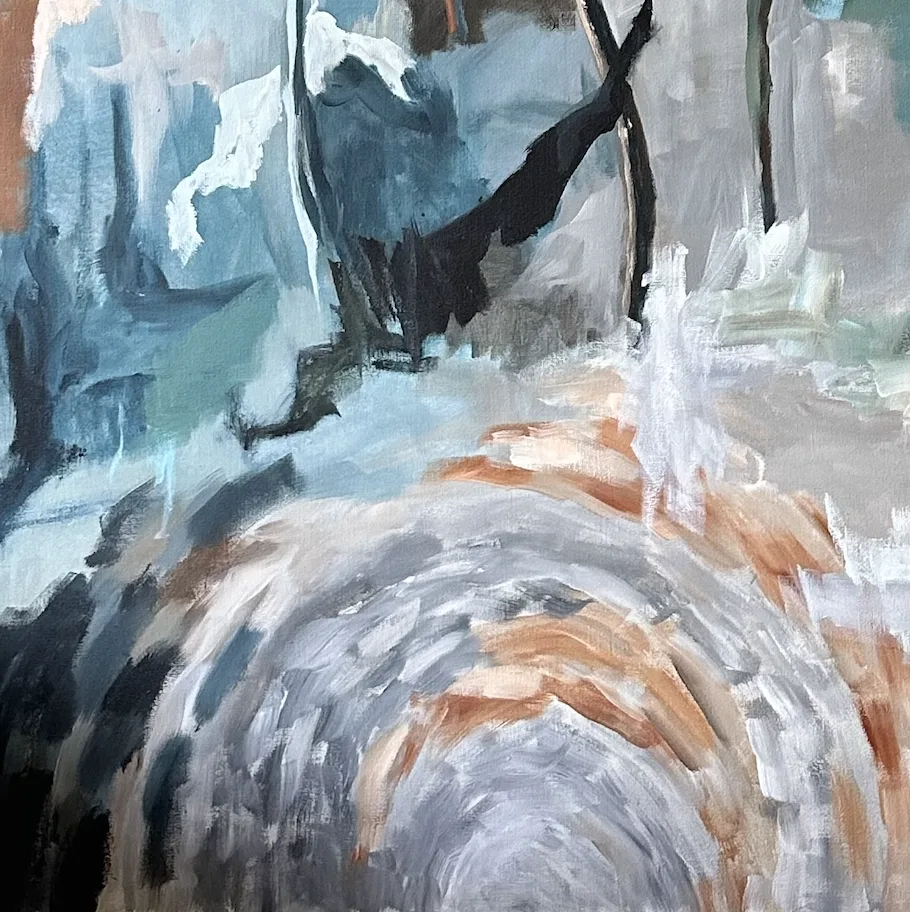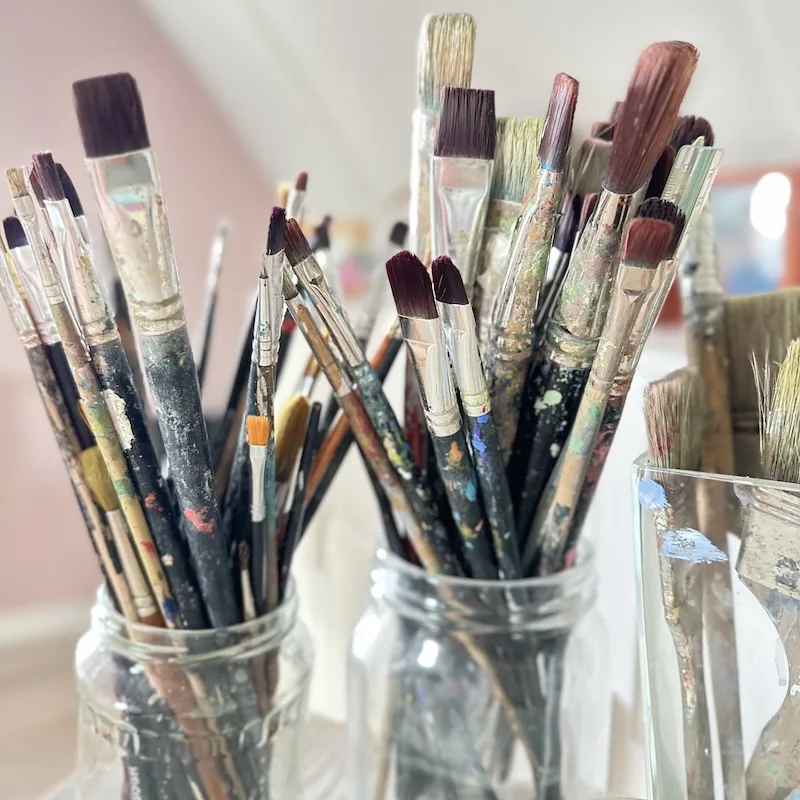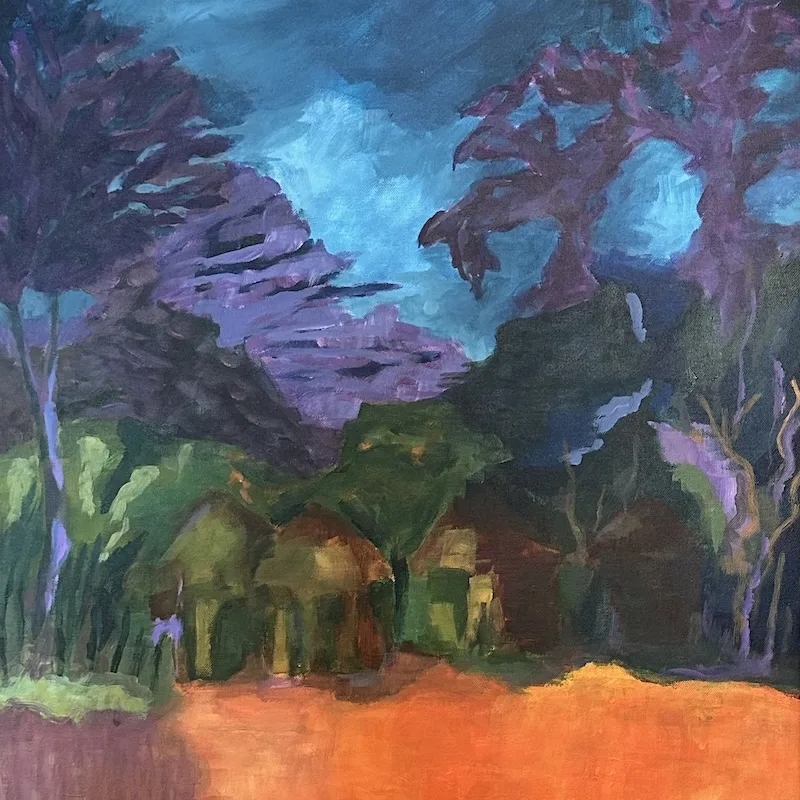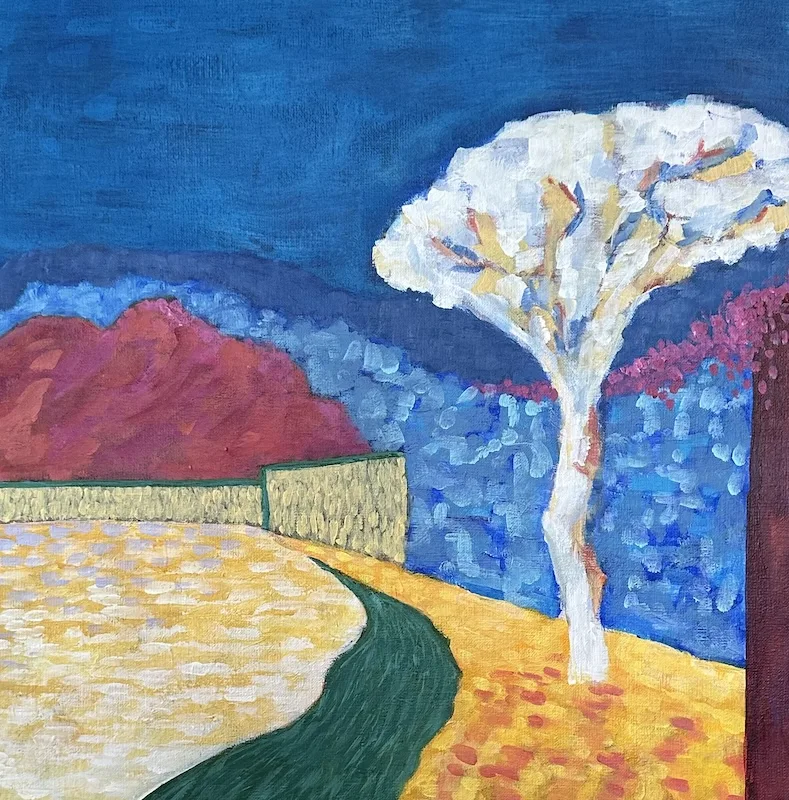
Wet-on-wet or alla prima technique, what’s that?
February 2025
A technique that I use a lot is the wet-on-wet technique, also known as ‘alla prima’ painting. This is a painting technique in which wet paint is applied directly over previously wet layers. This ensures smooth transitions, soft color effects and a spontaneous appearance in the artwork. In this article I discuss the benefits, requirements and applications of this technique.
What is the history of the wet-on-wet technique?
Working wet on wet is an old technique but took off during Impressionism, when more painting was done outdoors and works had to be completed faster. Monet and Van Gogh, for example, sometimes made a painting within a day. It also matched the desire of impressionists: to capture the spontaneity of the moment, with an energetic and expressive brushstroke. Before this time, painters mainly worked with glazes, or layer upon layer for which the surface had to be dry. These were long processes.
What is the wet-on-wet technique?
The name actually says it all, the wet-on-wet technique involves applying several layers of wet paint on top of each other without waiting for the previous layer to dry. This way you can mix colors directly on the canvas, resulting in a dynamic and expressive look.
Advantages of the wet-on-wet technique
Do you like to paint spontaneously and expressively or do you want to learn to do so? Then this technique is suitable for making a painting. Because the paint remains wet, you can sometimes complete a painting in one session. It does require a quick approach. Another advantage is that the colors mix on the canvas, and this ensures a smooth transition between the different colors and surprising pieces in your work. It is a technique that is often used in oil painting but can also be used by painters who like to paint with acrylic paint or watercolor paint.
Disadvantages alla prima painting
Are there also disadvantages? Of course. Suppose you put blue on your canvas and you add the color yellow, then it becomes green. Spontaneously blending your colors can result in color schemes that you don’t want. You can also get muddy colors when mixing. In that case, you have to wait a while for one layer to dry before applying a new layer. This is what helps me: rinse your brush regularly in clean water and dry with a cloth, or use multiple brushes at the same time for different color schemes.
What do you need for the wet-on-wet technique?
If you want to paint using the wet-on-wet technique, you will need the usual painting materials. Such as a canvas or paper, oil paint, acrylic paint or watercolor paint depending on your preference and thinners or mediums. It is best to use soft and wide brushes so that you can mix colors well. I personally prefer not to choose brushes that are too small, as larger brushes, brushes, spalters, sponges and pallet knives provide spontaneous touches in your work.
Ideal for developing creativity
This technique is ideal for working more creatively, because your brush stroke, the colors and the shapes you use can lead to new, surprising results. When painting we often have a certain image in our heads, such as a landscape or a certain shape. This wet-on-wet technique is very suitable for getting rid of this. You learn to paint more loosely. Don’t be afraid to paint over your existing work with a brush and paint, as this can create spontaneous works! This technique is actually an experience that you can also practice very well with children.
Text and painting: Carola Siksma-Ruiters
Read more PaintingWiki articles



